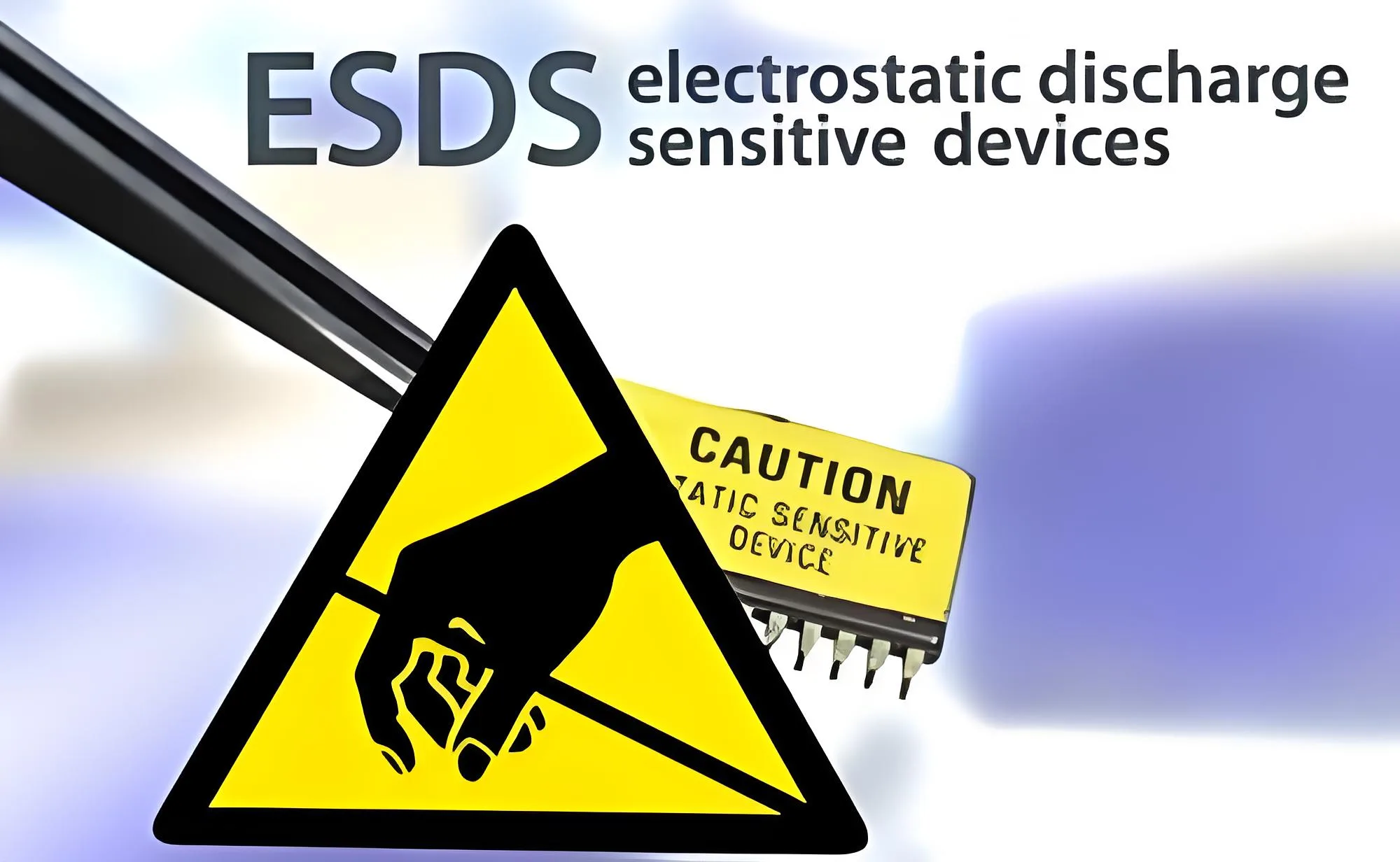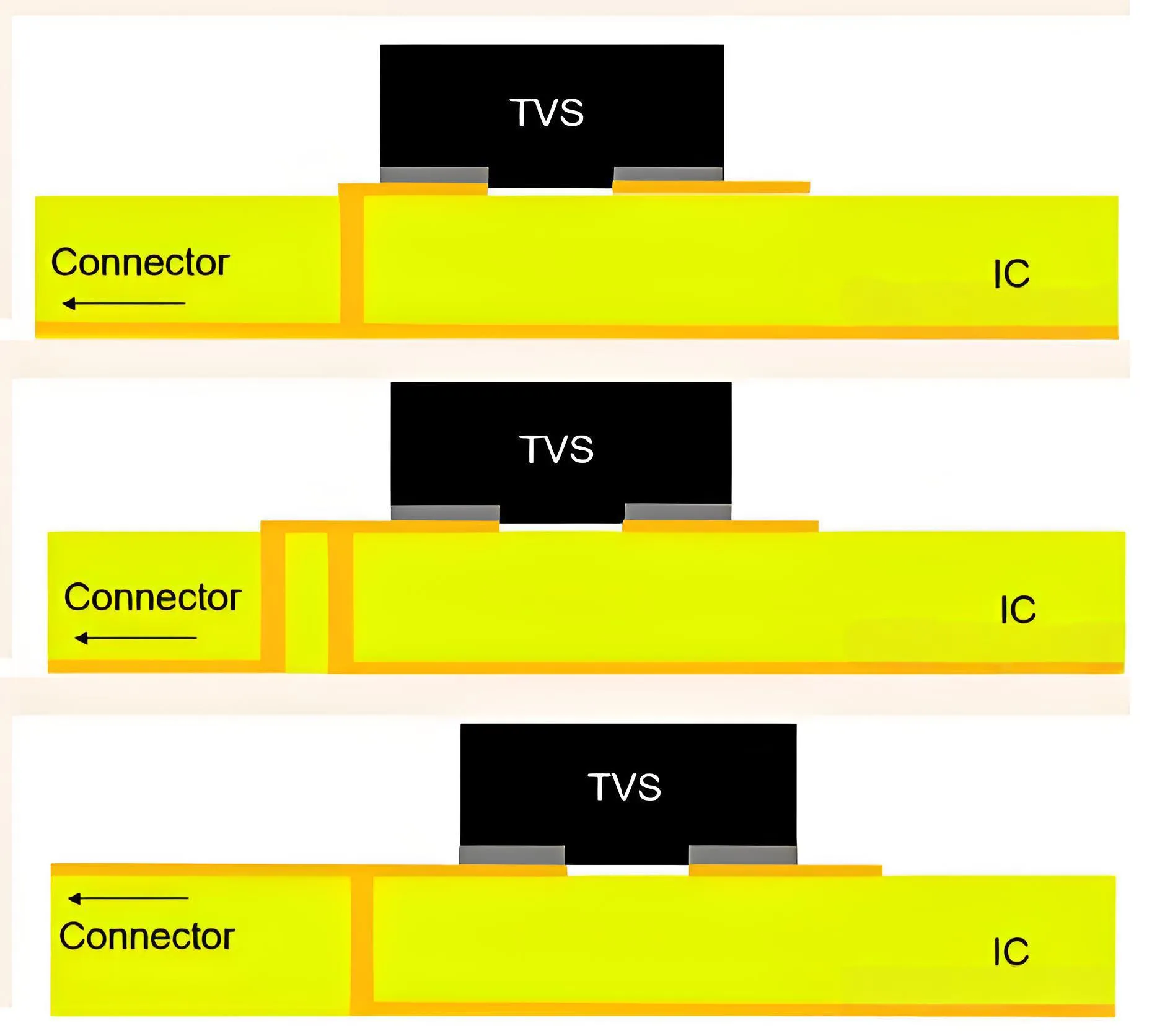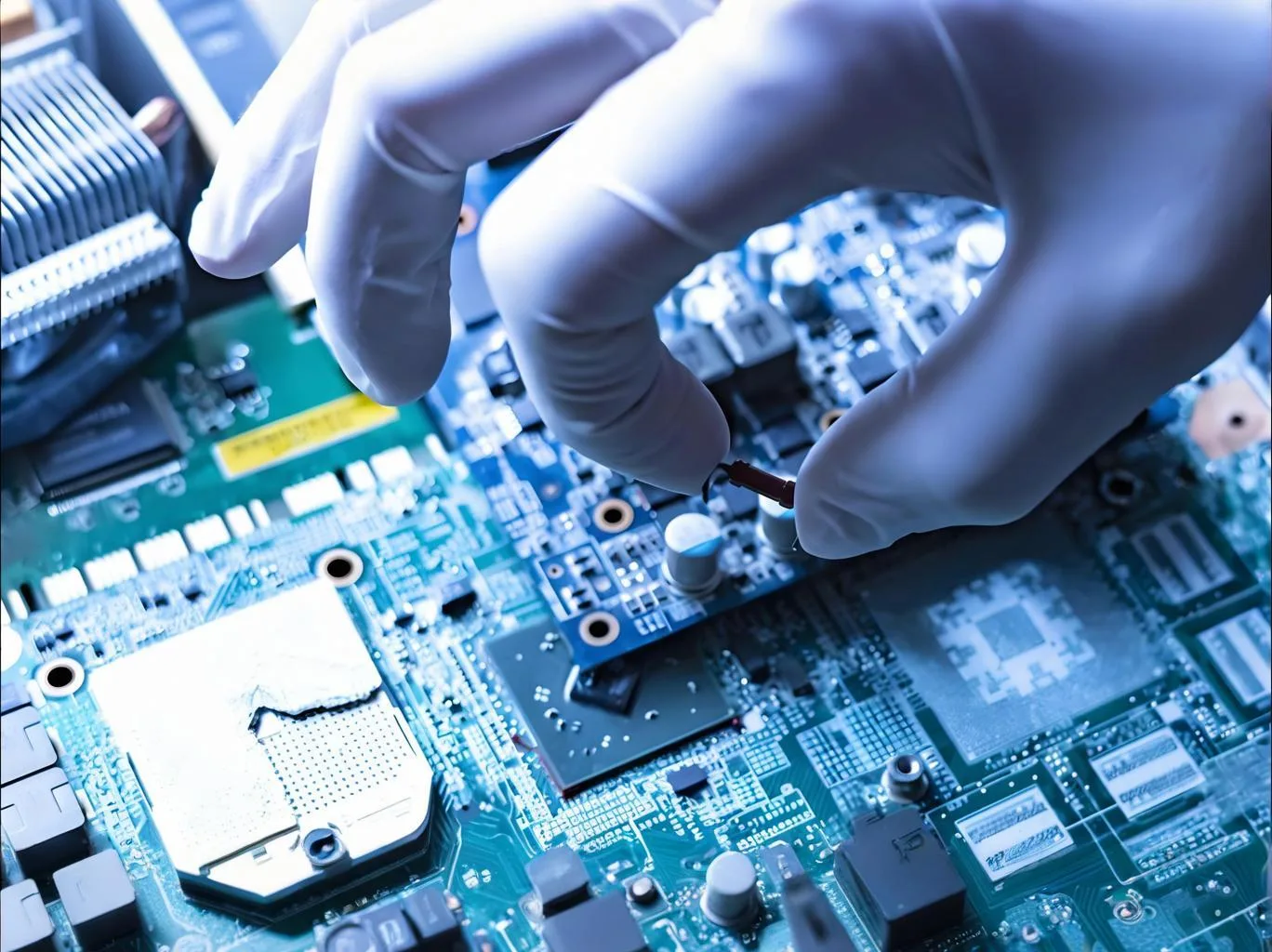“Why do chips get damaged when I just handle the placa de circuito normally?” Many engineers feel confused when facing circuit damage caused by electrostatic discharge (ESD). Na verdade, the human body can generate electrostatic voltage as high as tens of thousands of volts—far exceeding the tolerance limit of most electronic components.
Even the most precision PCB (Placas de circuito impresso) can be vulnerable to ESD. An accidental touch may cause thousands of dollars’ worth of chips to fail instantly.

Against the backdrop of increasingly sophisticated electronic devices today, ESD protection is no longer an optional choice but a necessary measure to ensure product reliability. This article will deeply analyze the key design points and manufacturing criticals of PCB ESD protection, helping your products resist this “invisible lightning.”
1. ESD Threats: The Lethal Impact of Invisible Miniature Lightning
ESD can be imagined as an invisible miniature lightning. Daily activities such as walking, taking off sweaters, or even picking up a plastic box can generate static electricity. The voltage of this static electricity often reaches several thousand volts, or even tens of thousands of volts.
The human body itself is actually the largest static electricity generator. Especially in dry seasons, ESD may occur the moment you reach for a PCB. Seemingly insignificant items like plastic desktops, chemical fiber carpets, and foam packaging boxes can all become “accomplices” of static electricity.
ESD harms PCBs in two main forms:
- Hard damage: This is the most direct and obvious damage. ESD will instantly breakdown the tiny circuits inside the chip, causing permanent damage to the chip. Como resultado, the PCB will stop working entirely, or specific functions (such as serial ports or ADCs) will fail directly.
- Chronic damage: This is more hidden and troublesome. ESD may not completely destroy the chip, but it can cause micro-damage to internal oxide layers and other structures. The PCB may still work normally now, but it will become unstable and have a shortened service life. It may suddenly malfunction after a few days or under specific temperatures. This intermittent failure is the hardest to troubleshoot during debugging and consumes a lot of time and effort.
2. TVS Diodes: The Precision Lightning Protection System for Circuits
TVS (Transient Voltage Suppressor) diodes are the first line of defense against ESD threats and the most effective protection components. They act like “security guards for circuit signals”—maintaining a high-impedance state under normal conditions. Once an ESD pulse is detected, they instantly switch to a low-impedance state, diverting the high-voltage pulse to the ground and protecting the backend chips.
2.1 Golden Rules for TVS Layout
Parasitic inductance is the biggest enemy of TVS performance. Parasitic inductance in the circuit—including the parasitic inductance of the TVS pins themselves—affects the clamping voltage (Vc) at the backend IC when ESD or surges occur.
The protection effect of TVS follows the formula: VCL = VBR + RD × IPP. Entre eles:
- RD is the parasitic capacitance of the TVS itself; products with smaller RD values have better clamping voltage and can protect ICs more effectively.
- IPP is the current passing through the TVS during the test instant.
To maximize the protection effect of TVS, you must ensure the ground connection is as short as possible and place the TVS as close to the ESD source as possible. This not only minimizes EMI (Electromagnetic Interference) on the PCB but also reduces coupling with other paths. Choosing a TVS device with a response time of less than 1ns provides optimal protection for high-speed interfaces—critical for PCBA (Conjunto da placa de circuito impresso) confiabilidade.

3. PCB Layout and Grounding: The Foundation of ESD Protection
Reasonable PCB layout and grounding design are the cornerstones of ESD protection. Even without additional protection components, they can significantly improve the ESD immunity of the product.
3.1 Key Points for PCB Layout
- High-speed signal lines should be ≥3mm away from the board edge, while low-frequency sensitive signals should be ≥2mm away.
- Critical signals such as clock lines and reset lines should be surrounded by ground (ground shielding). Arrange ground lines on both sides and add ground vias every 50mm.
- All exposed metal enclosures must be single-point grounded through a 1MΩ resistor to avoid forming a low-impedance loop through direct grounding.
- A creepage distance of ≥5mm should be maintained between user-contact components (such as buttons and knobs) and the main board. Use conductive foam or metal springs to achieve equipotential connection.
- Set spark gaps (with a spacing of 0.2mm–0.5mm) at the Pin1 position of the connector and the grounding point of the metal enclosure. These measures can effectively guide ESD current to discharge safely and avoid damage to sensitive circuits.
3.2 Principles for PCB Grounding Design
When designing double-layer or PCB multicamadas, try to ensure a complete and large-area ground plane. A complete ground plane is like an extensive plain—it can quickly absorb and disperse ESD energy, preventing energy from accumulating at a single point. Ao mesmo tempo, it provides an efficient discharge path for TVS diodes.
During PCB layout, fill the ground network with copper and ensure the ground copper covers as much of the blank area on the board (without traces) as possible. For all external interfaces (such as USB ports and DC power sockets), connect the metal enclosure to the board’s ground through a high-voltage capacitor or directly. This way, ESD will be diverted through the enclosure first before entering the circuit—enhancing PCB ESD protection at the interface level.
4. Lamination Process: The Internal Protection Barrier for Multi-Layer PCBs
In multi-layer PCBs, the quality of the lamination process is directly related to the board’s internal ESD protection capability. If the dielectric between two conductor layers is too thin, high-voltage ESD can easily breakdown it, causing permanent damage.
4.1 Core Role of Prepreg
Predeg (pre-impregnated composite material) acts as the interlayer insulating dielectric in multi-layer PCBs. It is a “functional composite material” controlled by precision manufacturing processes, with its core feature being that the resin is in a “B-stage semi-cured state”—a characteristic that is key to realizing multi-layer board lamination.
Prepreg not only provides physical bonding but also achieves three effects: isolamento elétrico + structural support. Its insulation performance and dielectric properties directly determine the electrical reliability of the PCB: after curing, the volume resistivity is ≥10¹⁴Ω·cm, and the breakdown voltage resistance is ≥20kV/mm, which can block interlayer leakage—critical for preventing ESD-induced interlayer damage.
The core parameters of Prepreg include:
- Resin Content (RC%): Normally 50%~70%, which determines interlayer bonding strength and dielectric layer thickness.
- Flowability: 15~30mm.
- Temperatura de transição vítrea (Tg): Normally 150~200℃.
- Constante dielétrica (Dk): 4.2±0.2 for ordinary FR-4 Prepreg.
4.2 Quality Control for the Lamination Process
To ensure lamination quality, the coefficient of thermal expansion (CTE) of Prepreg must match that of FR-4 core boards and copper foils. If the Z-axis CTE deviation exceeds 5ppm/℃, interlayer cracking is likely to occur during temperature cycling.
During lamination:
- When the temperature of the middle layer is 80~130℃, the temperature difference between the top layer of the carrier plate and the middle layer should not exceed 25℃, and the heating rate should not exceed 1.3~5℃/min.
- When the temperature reaches 85±5℃, determine the time to switch from low pressure to medium pressure.
- When the temperature reaches 110±5℃, determine the time to switch from medium pressure to high pressure.
In modern PCB manufacturing, vacuum press technology has significantly improved lamination quality. The vacuum environment avoids the formation of bubbles and voids, ensuring uniform flow and filling of Prepreg resin—strengthening the multi-layer PCB’s resistance to ESD breakdown.
5. Advanced Processes and Quality Verification
As electronic devices develop toward high-frequency and high-density, ESD protection faces new challenges and requires more advanced process solutions.
5.1 Process Improvements for Special Applications
- High-frequency communication scenarios: Low-Dk Prepreg (Dk=3.48±0.03, Df<0.004) can meet 28GHz/77GHz signal transmission requirements while providing reliable insulation protection—critical for maintaining signal integrity and ESD resistance in 5G or automotive radar PCBs.
- Thick copper boards (≥3oz): Adopt “double-layer low-resin-content Prepreg lamination” (52%±1% per layer, total resin content 56%) combined with 8MPa high-pressure lamination. This can increase the dielectric layer’s breakdown voltage resistance to 3500V—enhancing ESD protection for power-related PCBs.
- IDH (Interconexão de alta densidade) Placas: Require low-flowability Prepreg (18±2mm) + vacuum lamination to address the problem of 0.075mm microvia resin overflow. These special process treatments not only improve product performance but also enhance the internal ESD protection capability of the circuit board.
5.2 Quality Verification and Testing Standards
A closed-loop quality verification system is crucial for ensuring PCB ESD protection capabilities. It includes:
- Inspeção recebida: Use infrared spectrometers to test volatile content and dielectric spectrometers to verify Dk/Df stability.
- Process monitoring: Collect temperature and pressure data in real time during lamination.
- Finished product verification: Conduct interlayer peel strength testing and insulation resistance testing.
The final ESD protection verification must meet the IEC61000-4-2 Level 4 padrão, Ou seja,, contact discharge testing up to ±8kV and air discharge up to ±15kV. After testing, the following criteria must be met:
- Signal integrity (eye diagram opening >70%).
- Bit error rate (<1×10^-12).
- Operating current fluctuation (<± 5%).
- Reset times (0 times/test cycle).
 Today’s chip manufacturing processes are becoming increasingly sophisticated, but this does not mean we can lower our vigilance against ESD. On the contrary, as circuit sizes shrink and operating voltages decrease, components become more sensitive to electrostatic discharge.
Today’s chip manufacturing processes are becoming increasingly sophisticated, but this does not mean we can lower our vigilance against ESD. On the contrary, as circuit sizes shrink and operating voltages decrease, components become more sensitive to electrostatic discharge.Excellent PCB engineers consider ESD protection at the initial design stage, integrating protective measures into the “DNA” of the product. This is not only a technical challenge but also a test of responsibility and professionalism—because the best fault repair is to prevent faults from occurring in the first place.
 LOGOTIPO UGPCB
LOGOTIPO UGPCB

